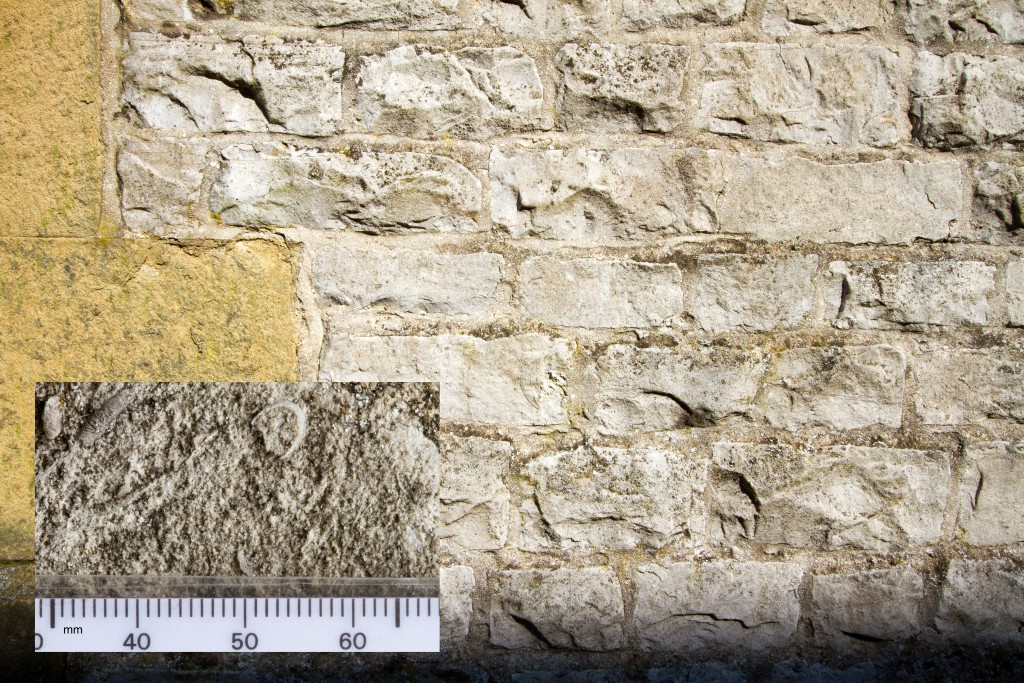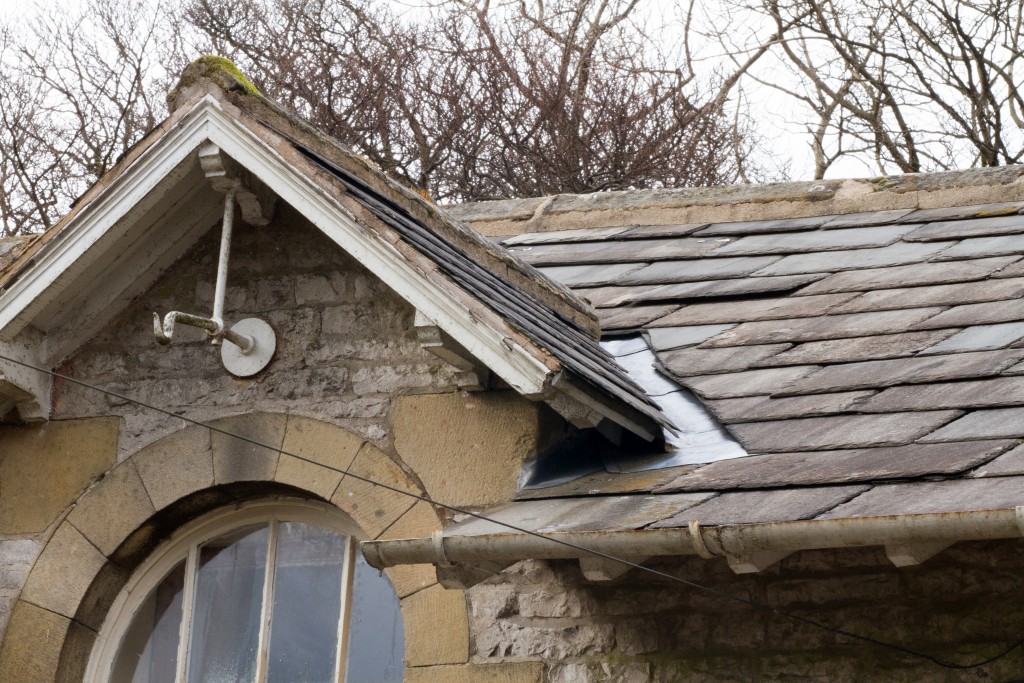The North Wing south-facing eastern side of the wall contains hammer-dressed limestone blocks which show a mixture of micrite (muddy limestone) and coarser brachiopod beds. The muddy limestone beds are full of fossils of all types when viewed with a hand lens.
There are tiny broken shells of brachiopods, crinoids (sea lilies) and corals a rich biodiversity in the Carboniferous seas.
Looking at the roof of North Wing the slates are graded, similar to those on the boiler house opposite. Nowadays most slates are machine cut to one or two sizes only.
Modern houses are roofed with slates of the same size. The closest slates to here are those of the Lake District but they are not necessarily the cheapest. Perhaps we should think about ‘rock miles’ or the distance rocks travel nowadays and their carbon footprint?

